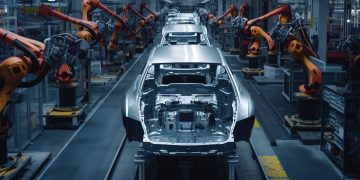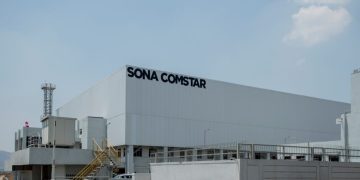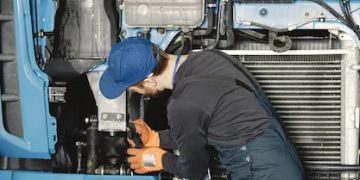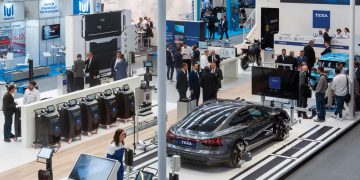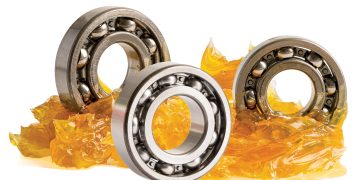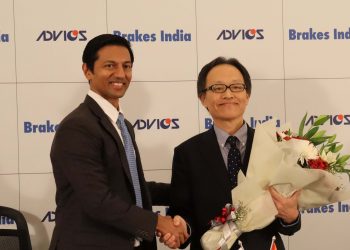Robots are becoming more advanced and can now undertake complex tasks such as car repair and inspection. However, there are no robots designed solely for servicing vehicles. This means that dealerships and garages would have to purchase multiple systems and robots to perform all of the different tasks that can be carried out by just one auto mechanic, making it an expensive option. Some experts believe that the cost of technology for enabling full automation is too high compared to human labour, which could mean that there will never be fully automated auto mechanics. Nonetheless, there are a few automated solutions that deal with specific components of automotive service.
The long-anticipated robot revolution in the automotive industry has been slower to materialise than expected, hindering the potential for increased manufacturing capacity and enhanced supply chains. Despite annual robot purchases by automakers, the adoption remains limited due to persistent barriers.
The automotive industry has been a pioneer in embracing industrial robotics, boasting one of the highest concentrations of robots in various applications. Let’s see some of the common types of robots employed in the automotive sector.
Six-Axis Robots
In the automotive industry, six-axis robots are recognised as versatile automation solutions, striking a balance between speed, reach, and payload capacity. These robots are ideal for tasks like material handling, such as mounting door panels or wheels onto automotive bodies. However, they are unsuitable for tasks requiring proximity or collaboration with human workers due to safety concerns.
Collaborative Robots (Cobots)
Share similarities with six-axis robots but are specifically designed to work collaboratively alongside human operators. They feature force and speed limitations, minimising the risk of injuries in proximity to humans. Cobots are well-suited for simple assembly tasks, drilling, screwing, and quality assurance applications involving human collaboration.
SCARA Robots
Compact and optimised for quick, repetitive tasks demanding high accuracy, excels in applications like high-speed component assembly, particularly in automotive electronics. While cost-effective, they are not suitable for tasks requiring extensive range, heavy payload capacity, or complex motion like welding or painting.
Mobile Robots
Also known as automated guided vehicles, handle internal logistics and material handling tasks by transporting parts within factory areas. These robots navigate using various technologies, allowing for fleet control optimisation and collaborative coordination. However, they lack manipulators and often require pairing with other robot types or human operators for specific tasks.
Choosing the right automotive robot involves considering specific application demands, evaluating safety requirements, assessing speed and precision needs, factoring in payload capacity, accounting for logistics and material handling requirements. By carefully evaluating the specific requirements of automotive projects, manufacturers can optimise their use of diverse robotic technologies, enhancing efficiency and productivity across various applications within the industry. Some of them are;
Tyre Mounting Robots
The traditional manual process of replacing vehicle tyres is being revolutionised by the RoboTire system. This robotic solution, aptly named RoboTire, is designed to change all four tyres on a vehicle in less than 25 minutes. By leveraging machine learning, artificial intelligence (AI), and high-definition cameras, the robot autonomously performs tyre removal, lifting, and installation without the need for human intervention. This innovation not only expedites tyre-related repairs but also allows human auto mechanics to focus on more complex tasks, addressing the global shortage of trained technicians.
Automated Vehicle Paint Repair
Ford Motor Company, in collaboration with 3M, has introduced the 3M Finesse-it Robotic Paint Repair System, originally designed for automotive manufacturing but adaptable to consumer vehicle repairs. This technology automates the painting process for car finishes, addressing defects identified by an accompanying vision system. Not limited to painting, the system also automates sanding and polishing, offering an efficient solution for repairing damaged vehicle exteriors without human involvement.
Engine Inspection with Snake Robots
To streamline the diagnosis and maintenance of complex vehicle engines, Rolls Royce, in partnership with the University of Nottingham and Metallisation, has developed a pair of snake robots. Part of the Intelligent Engine Project, these flexible robots navigate through critical engine components, conducting patch repairs and eliminating the need for disassembly. Mimicking the functionality of an endoscope, these snake robots autonomously perform maintenance tasks, minimising both costs and time.
Telepresence Robots for Automotive Tune-ups
Audi has introduced telepresence robots to assist human auto mechanics in performing automotive tune-ups. These Audi Robotic Telepresence robots, equipped with cameras and display screens, facilitate remote communication between auto mechanics and experts in the field. This innovation enhances efficiency in Audi dealership garages, allowing for real-time collaboration and support.
Defect Detection with Kitov-CorePlus
Kitov.ai has developed Kitov-CorePlus, a robotic system specialising in fully automated visual inspection for identifying electronics defects in automobiles. Capable of recognising issues such as bent pins, surface defects, coverage defects, and missing components, this system offers automated smart visual inspection on the production line. The goal is to extend this defect detection capability to local garages, providing a comprehensive solution for identifying and rectifying vehicle defects.
While robots are making significant strides in automating various automotive processes, the intricate and specialised knowledge of human auto mechanics remains crucial. The collaboration between robotics and human expertise ensures a more efficient and comprehensive approach to vehicle maintenance and repair. There are some key barriers that have to be taken care of in the use of robots during repairs. They are;
| High Cost: The primary obstacle is the prohibitive cost associated with deploying robotic automation. Beyond the robot purchase, significant expenses are incurred in engineering coordination and programming. Programming costs, which constitute about 75% of the lifetime operating costs for industrial robots, make it challenging for those producing low volumes or low-value products to justify the investment.
| Inflexibility: Once a robotic work cell is engineered and robots are programmed, any changes in manufacturing processes or introduction of new robots necessitate extensive reprogramming and potentially re-engineering. This inflexibility renders robotics impractical for businesses producing diverse products in small volumes.

| Marginal Benefits: The efficiency gains from adding robots to work cells are undermined by the complexity of programming multiple robots to work collaboratively without collisions. The difficulty of multi-robot programming often leads to simplifications, such as the use of interference zones, reducing efficiency and discouraging widespread robot use.
To unlock the potential of robotics, efforts should focus on reducing barriers to adoption. As the cost of robots and engineering remains unlikely
to decrease significantly, attention should be directed toward minimising the time and expense of deployment and programming.
Needed Solutions
l Adaptability: Robots should be adaptable to unstructured work cells, relying on reliable and cost-effective vision systems. Advances in affordable vision technologies contribute to democratising robotic applications.
l Fast Motion Planning: Motion planning, crucial for navigating dynamic environments, must be swift, especially in scenarios involving human interaction. Ongoing advancements suggest that motion planning bottlenecks will soon be overcome.
l Automation of Programming: Democratisation requires robots that can be quickly programmed with high performance. Automation of programming tasks is essential to simplify the process for engineers, enabling them to specify tasks rather than laboriously manage robot trajectories.
Innovations in these key areas can significantly enhance the role of robotics in the automotive sector, fostering increased domestic manufacturing capacity and more resilient supply chains, especially in light of recent disruptions like the pandemic.
Future of Automotive Robotics
The future of automotive robotics envisions a continued partnership between modern robots and human operators, with robots taking over monotonous and physically demanding tasks. Angular robots, also known as articulated or anthropomorphic robots, are expected to remain a crucial element in the automotive industry due to their versatility, performance, and efficiency. These robots, equipped with five or six independent axes (degrees of freedom), operate in serial kinematics, making them suitable for a wide range of activities such as handling, machining, painting, transport, and assembly.
Angular robots offer flexible mounting possibilities and the ability to achieve any orientation of the end-effector (working head–gripper, spot gun, arc-welding torch, etc.), although they may have slightly less stiffness. Despite their success, an emerging trend involves the increased application of collaborative robots, or “cobots,” designed to collaborate with human operators. Another trend is the use of robots with a parallel kinematic structure capable of achieving high speeds and accelerations, often working in short cycle times. The integration of “smart sensors” and the utilisation of Industry 4.0 for data exchange between devices are contributing to advancements in robotic capabilities.
Furthermore, there is a growing trend in cases where automated processes require more than one arm. Dual-arm robots, capable of multi-axial movements and executing high-precision tasks with redundant axes, are becoming more prominent. The overall development of robotisation is moving toward the concept of an autonomous factory, aiming to run production independently. However, experts emphasise that achieving a fully autonomous factory is still a long-term goal, and there is substantial progress to be made in this direction.
-Vaishnav Satheesh
